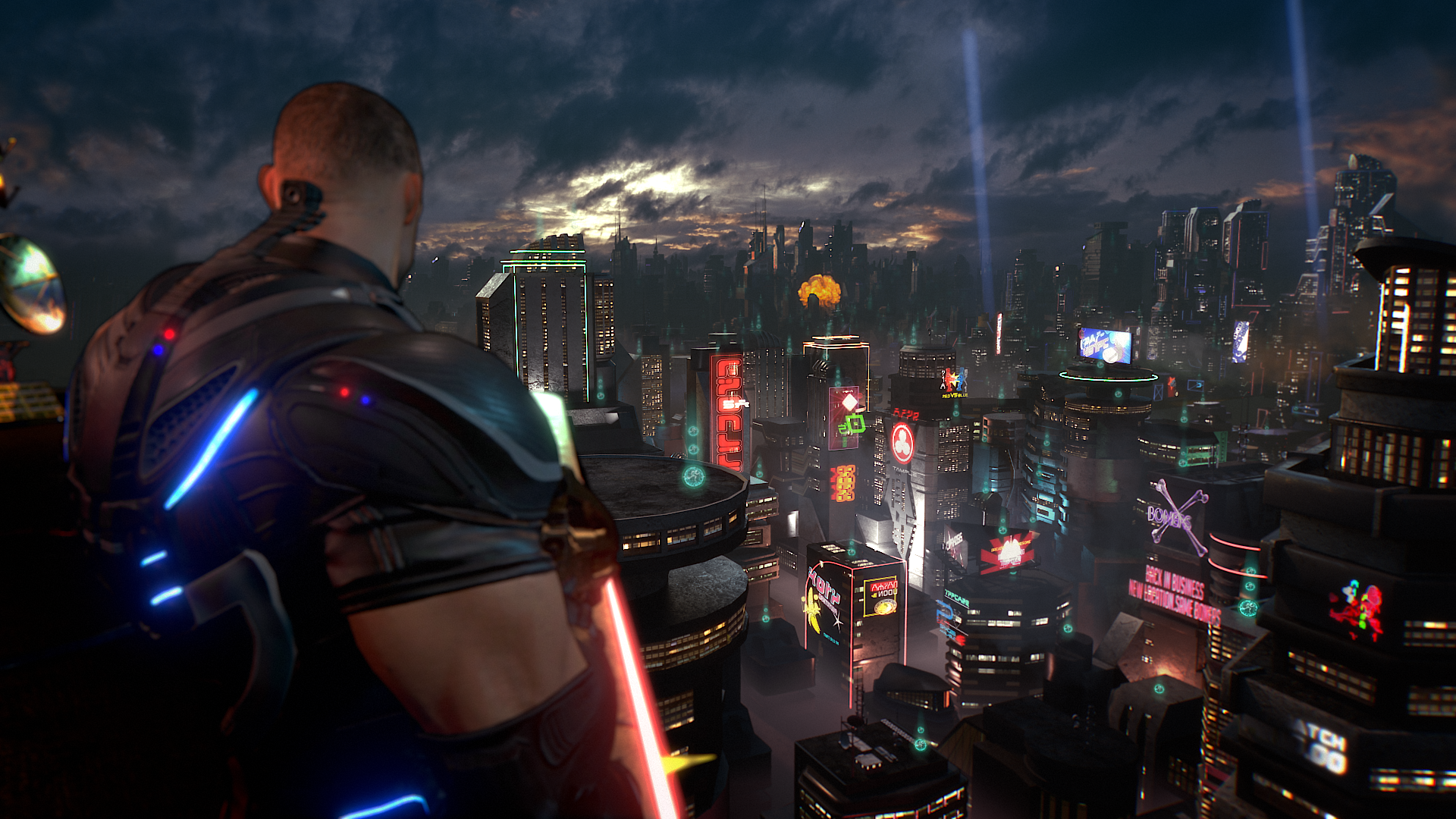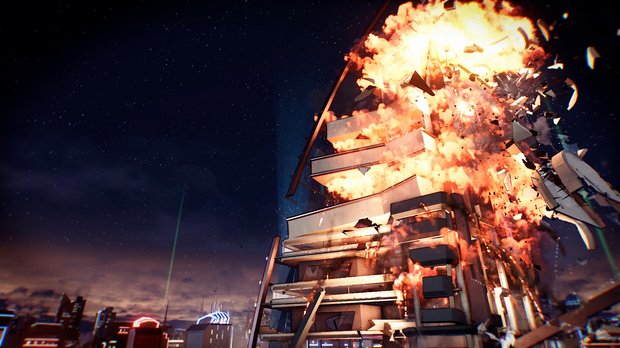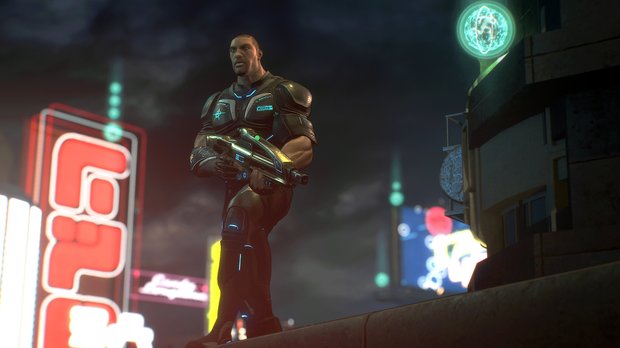Crackdown 3 is basically two games, and I want to play them both
A lot of games today make a big noise about how inter-connected their single and multiplayer components are. You'll see words like "seamless" and "social" thrown around. You'll have players drop into your world, ghosts will flit along paths you don't want to take, and messages implying phallic attributes will appear all over the place. Crackdown 3 is entirely the opposite, and it comes out looking like a far more modern game than most open worlds that claim to be.
On the one hand, this is a true follow-up to the original Crackdown, a single player, offline romp across a massive future-city, that series creator Dave Jones explains is designed first and foremost like a 3D platformer. Your Agent protagonist looks very familiar, a charmingly out of proportion, cel-shaded warrior who bounds metres into the air, creates shockwaves when they land and takes out the town's criminals with an abandon that would ordinarily create a mountain of paperwork even they couldn't jump over.

Set some time after the original games, Crackdown 3's main thrust is to liberate the city from the grip of a web of Crime Lords, each holed up in their own territory and begging to be dispatched. Key to the game is the new Hate System, a meter that builds as you hit a Lord's shady business network. The more you stifle their cashflow, the more the Hate Metre builds, the more goons they send to get rid of you, killing whom leads to even more Hate. Once the metre hits maximum, the Crime Lord themselves will appear for a bespoke boss fight (this can appen anywhere in their territory) - we saw a little man in a big mech suit, which had to be lured under crushers and shipping crates to fully immobilise. Think of Hate as a weird reflection of GTA's wanted level stars - you want to hit 5 as quickly and efficiently as possible.
Jones acknowledges that previous games have lacked a convincing narative, but that his team don't want to take your hands off of the controller while telling their new one - the team's solution is "digital fabric", a shifting skin of interactive holograms that flits across buildings, the returning Transforming Vehicles, even Agents' tight-fitting suits. The fabric can be hacked by crime lords, who'll push their huge, hologrammed heads out of thin air to taunt you as you run past, while your chunky little car will point out where it's being shot from, and warn interlopers they're about to be arrested or (more likely) blown off of the top of a building by sheer force of superheroism.

It's an extension of the original game, then, taking the unlikely success story's power-trip ideas and beefing them up to make for a more modern, cohesive experience. And then you see multiplayer mode. Set in an entirely different city, this is where Microsoft's promise of cloud computing and total destructability comes to bear. While the main game features interactive, destructable elements, multiplayer allows you to blow holes in literally any surface apart from the floor. Jones demonstrates this by first shooting individual bullets in a circular motion in a wall, slowly carving out a hole he can snipe through. Then he turns round and fires a rocket into a building, and we watch as a chunk falls a hundred feet, though a roof, which then collapses itself, bringing a small section of the building to the floor in a stony mess.
Less spectacularly, but more impressively, he then demonstrates that all of those chunks of building are still fully interactive, pushing them around, breaking them down into smaller pieces, and explaining that they will be there for the rest of this multiplayer session. There's no frame rate drop, no sign that any part of the game is struggling to keep up.
This comes down to the game's unique server architecture, which connects pieces of the city to individual servers, which then interact, swap duties and help each other out to resolve your wanton destruction, like some kind of pyrotechnic code ballet. Once Jones and three other players lay into the map's tallest building - which sags, collapses and takes out several others, exploding in a hail of concrete chunks - there are 11 servers running simultaneously to manifest each pirhouetting particle. I've never seen anything like it.
Sign up to the GamesRadar+ Newsletter
Weekly digests, tales from the communities you love, and more

Jones admits that much of the multiplayer's structure is yet to be decided on, never mind finished. With years of work put into the server-side destruction alone, we don't yet know whether the city will be persistent for a single group of players, or have to be destroyed anew with every new session. Equally, the Crime Lords have yet to be added - it's currently just a physics playground - although Jones indicates that, given they're so much easier to kill when you can just drop a building on them, they'll be much, much better guarded (think "Empire State Building covered in guns" and you might get it). He's not even sure if four players will be the upper limit for the mode - the server calculations are relatively painless to resolve, so we could see even more friends turn up to wreck things alongside you.
It's enormously exciting, both on a technological and a gameplay level. Jones asks us to imagine an impassable river, then points out that - given those fully modelled buildings are never faked up, even past their destruct-by date - we could just topple a couple and get by. He explains how getting into a locked room (the builldings currently have functional, if not fully-realised interiors), we could simply blow the floors out and jump our way up, like that scene from The Raid in reverse. There's a sense from Jones that this doesn't just offer the tools for destruction, that it brings level design up to a grand scale - when you can change everything about an area, you have to design an intriguing game around it.
When you consider that that is, quite literally, only the half of it, Crackdown 3 has suddenly stepped up from "intriguing concept" to, quite literally, one of the most exciting games of this generation. Stick that up your "seamless gameplay".



